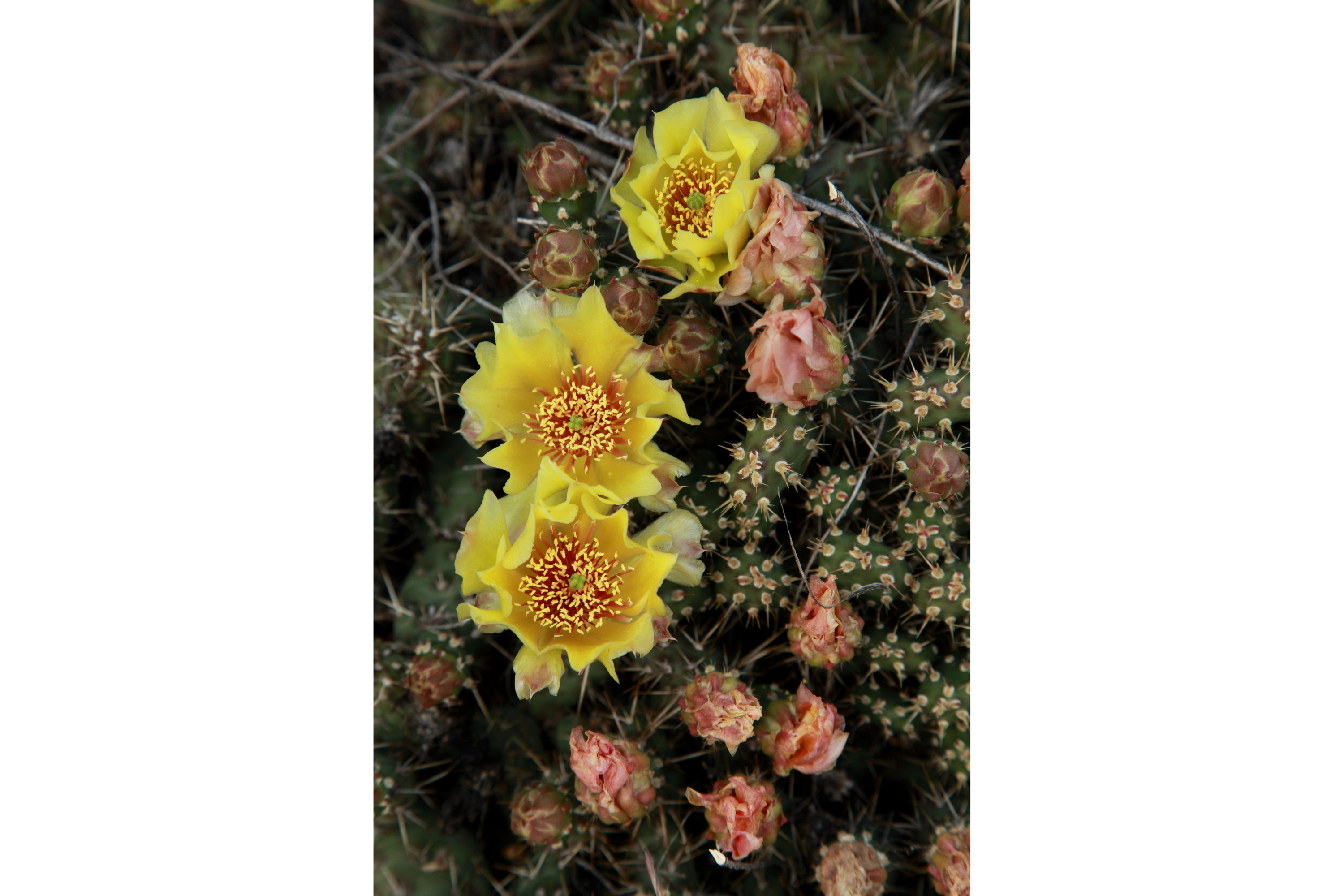Brittle pricklypear
(Opuntia fragilis)

Description
Opuntia fragilis, known by the common names brittle pricklypear and little prickly pear, is a prickly pear cactus native to much of western North America as well as some midwestern states such as Illinois, Iowa, Wisconsin and Michigan. It also occurs in several Canadian provinces. It is known from farther north than any other cactus, occurring at as far as 56°N latitude in British Columbia. There is an isolated and possibly genetically unique population in Eastern Ontario known as the "Kaladar population". Opuntia fragilis is a small, prostrate plant, rarely more than 10 cm (4 in) high: joints tumid, fragile, easily detached, oval, elliptical, or subglobose, 3–5 cm (1–2 in) long and nearly as thick as broad, bright green: areoles 0.6–1.3 cm (1⁄4–1⁄2 in) apart, with whitish wool and a few white to yellow bristles, which are much longer and more abundant on older joints; spines 1–4, occasionally a few small additional ones, weak, dark brown, the upper one usually longer and stronger than the others, rarely 2.5 cm (1 in) in length: flowers greenish yellow, 2.5–3.2 cm (1–1+1⁄4 in) wide: fruit ovate to subglobose with few spines or bristles, mostly sterile, 2.5 cm (1 in) or less long; seeds few and large. Opuntia, commonly called prickly pear or pear cactus, is a genus of flowering plants in the cactus family Cactaceae. Prickly pears are also known as tuna (fruit), sabra, nopal (paddle, plural nopales) from the Nahuatl word nōpalli for the pads, or nostle, from the Nahuatl word nōchtli for the fruit; or paddle cactus. The genus is named for the Ancient Greek city of Opus, where, according to Theophrastus, an edible plant grew and could be propagated by rooting its leaves. The most common culinary species is the Indian fig opuntia (O. ficus-indica). O. ficus-indica is a large, trunk-forming, segmented cactus that may grow to 5–7 m (16–23 ft) with a crown of over 3 m (10 ft) in diameter and a trunk diameter of 1 m (1 yd). Cladodes (large pads) are green to blue-green, bearing few spines up to 2.5 cm (1 in) or may be spineless. Prickly pears typically grow with flat, rounded cladodes (also called platyclades) containing large, smooth, fixed spines and small, hairlike prickles called glochids that readily adhere to skin or hair, then detach from the plant. The flowers are typically large, axillary, solitary, bisexual, and epiperigynous, with a perianth consisting of distinct, spirally arranged tepals and a hypanthium.
Taxonomic tree:







